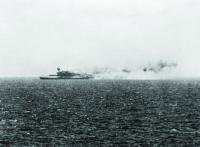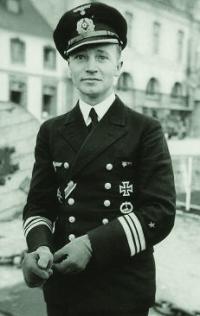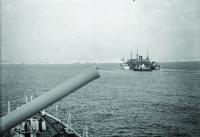This week, 70 years ago, a British convoy was steaming east through the Mediterranean to the relief of the beleaguered Island of Malta. Malta, now an independent republic, is located 50 miles south of Sicily and 207 miles north of Libya in the middle of the Mediterranean Sea. Gibraltar is 1,091 miles to the west and Alexandria is 937 miles to the east. Today Malta has a population of 368,250. Malta’s position astride the supply routes from the Kingdom of Italy to its Libyan colony made it extremely important during the war. The island began rationing in March of 1941.
In May of 1941, the German "Desert Fox," Erwin Rommel had warned that, "Without Malta, the Axis will end by losing control of North Africa." For two years, the Luftwaffe and Regia Areonautica pounded the island, launching 3,000 bombing raids in an effort to neutralize it. When it was neutralized, the Axis forces in North Africa received 80 percent of the supplies shipped to them. When it wasn’t neutralized, the Axis forces received 20 percent. In the meantime, not only were the Luftwaffe and Regia Areonautica pounding Malta, but they and the U-boats of the Kriegsmarine and Regia Marina were interdicting Allied supply convoys to Malta.
By the time of Operation Pedestal, Air Vice Marshal Sir Keith Park was in command of the air defenses of Malta. He assumed those responsibilities about the same time that one of his former adversaries during the "Battle of Britain" - Field Marshal "Smiling" Albert Kesselring - was assuming his responsibilities as Commander-in-Chief South. Keith Park had been instrumental in saving England during the "Battle of Britain."
With the launching of Operation Barbarossa, most German resources were shifted to the Eastern Front, leaving the siege of Malta in Italian hands. Finally, in January 1942, the Luftwaffe transferred II Fliegerkorps, under the command of Bruno Loerzer, to the Mediterranean Theater. By summer, Malta was beginning to starve. Soldier rations had been reduced from four to 2,000 calories per day. Of course for the citizens of Leningrad, this would have been a feast!
Operation Pedestal’s convoy began assembling at Gibralter on July 31, 1942. From Scapa Flow came battleships Rodney and Nelson, aircraft carriers Victorious and Argus and light cruiser Sirius. The carrier Indomitable and light cruiser Phoebe came from Freetown in West Africa (now Sierra Leone). At Gibralter, they were joined by aircraft carrier Eagle and light cruiser Charybdis. A few days later, cruisers Nigeria and Kenya joined the group from the river Clyde, in England.
In all, four aircraft carriers, two battleships, seven light cruisers and 32 destroyers sailed on August 9, 1942, to escort 14 merchant ships through the Axis gauntlet to the relief of Malta. Vice-Admiral Edward Neville Syfret was in command.
On August 11, 1942, the aircraft carrier HMS Eagle was sunk by U-73, captained by Helmut Rosenbaum, who was awarded the Knight’s Cross the next day. There were several attacks by the Luftwaffe and Regia Aeronautica, that day, with no significant damage. The aircraft carrier HMS Furious launched 37 Spitfires, which then flew the remaining 600 miles to Malta. The Furious then returned to Gibralter. En route, one of her escort destroyers, HMS Wolverine, rammed and sank the Italian sub, Dagabur.
The next day heavy Axis air and submarine attacks sank two merchant ships and the destroyer HMS Foresight, and heavily damaged the aircraft carrier HMS Indomitable. Italian sub Axum, with four torpedoes damaged cruisers Nigeria and Cairo and SS Ohio, while the destroyer HMS Ithuriel rammed and sank the Italian sub Cobalto. The Cairo later sank. The freighter Clan Ferguson fell victim to aerial attack.
On August 13, the convoy was subjected to attacks by Italian E-boats and more aerial attacks, losing six more merchant ships and the light cruiser HMS Manchester.
Three days later the American tanker SS Ohio arrived under tow, and after discharging its 10,000 tons of fuel, sank. But this was enough. Combined with the Spitfires, future convoys could now be protected while unloading, there was a viable threat to Axis convoys and the island would not starve.
In addition to the two Italian submarines that were sunk, the Regia Marina lost the cruisers Bolzano and Muzio Attendolo for the rest of the war.
Although, as an operation, Pedestal had been a failure because of the losses, it had succeeded in its purpose of keeping Malta in the war, and fatally undermining the Axis effort in North Africa.
NEXT WEEK: DIEPPE
Mr. Wimbrow writes from Ocean City, Maryland, where he practices law representing those persons accused of criminal and traffic offenses, and those persons who have suffered a personal injury through no fault of their own. ? Mr. Wimbrow can be contacted at wimbrowlaw@gmail.com <mailto:
wimbrowlaw@gmail.com>



